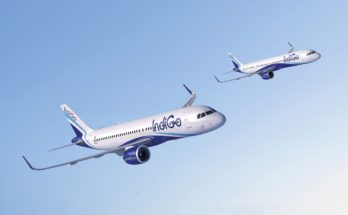
Dassault Aviation bounced back strong in 2021. Now the war in Ukraine is expected to weigh on 2022 growth.
Dassault Aviation posted 2021 sales of EUR7.2 billion, up almost 32 percent over 2020’s sales of EUR5.5 billion. Net income rose to EUR693 million for 2021, compared with 2020 income of EUR396 million.
The company weathered the initial shock of the COVID-19 crisis reasonably well, thanks to Dassault’s diversification between civil and defense products. Helping to maintain balance, a quick stimulus investment in the sector to the tune of EUR15 billion was undertaken by the French government. The country wants to preserve aviation skills in order to prevent decline and better compete with Boeing and a new potential rival in China’s COMAC.
Overall, producers of business aircraft managed to avoid the worst of the crisis, in contrast to their larger commercial counterparts. Prior to COVID-19, bizjet manufacturers were hopeful of a recovery in the languid market, as production was on the rise in 2019. However, the emergence of the pandemic in 2020 short-circuited any hopes that the 2019 results would turn out to be the start of a longer-term recovery in overall build rates.
While business jets lead the 2021 recovery, they are now expected to be one of the most affected sectors in the wake of unprecedented global sanctions against Russia. Not only will the company lose new orders from Russia and Russian oligarchs, but its MRO support activities are also halted in that country. The company is hopeful that the recovery trend will continue in the rest of the world, mitigating the anticipated loss.
Orders rose in 2021 to 51 aircraft, compared to 15 in 2020, thanks to pent-up demand. Contributing to the upward order driver was the launch of the new Falcon 10X during the year. This new ultra-long-range jet rounds out the company’s offerings and allows Dassault to match rival offerings such as Bombardier’s Global 7500 and the Gulfstream G700. Customers signing up for the 10X helped to bring Falcon backlog to 55 aircraft, a 62 percent increase from 34 aircraft in 2020.
The company is counting on this market recovering quickly, and the industry is in agreement. An industry standard, the Honeywell Annual Global Business Aviation Outlook (released in October 2021), forecasts up to 7,400 new business jet deliveries worth $238 billion from 2022 to 2031, up 1 percent from the same 10-year forecast a year ago. Overall, the forecast in this sector of the aviation industry will continue its accelerated recovery. However, this forecast will be impacted by the global repercussion of the Ukraine invasion. There is a “new normal” on the way once the conflict ends, and the lingering question is, just how deeply will firms be willing to return to and invest in the Russian market space?

Rafale Orders Take Off
Despite the Rafale losing the Finnish and Swedish fighter jet competitions to the F-35 during 2021, it still managed to tally an impressive number of export orders elsewhere.
In 2021, Dassault officially reported orders for 49 Rafales: 31 for Egypt, 12 for France, and 6 for Greece. The 2021 backlog for the Rafale was 86 aircraft: 46 for export and 40 for France. These totals did not include an end-of-year order from the United Arab Emirates for 80 aircraft. Adding to its backlog is a 42-aircraft order from Indonesia announced in February 2022.
As a result of these successes, in March 2022 Dassault officials said the production rate for the Rafale would rise from two a month to three by 2025 to meet demand.
According to Forecast International’s Military Aircraft Forecast, the French government had ordered a total of 192 Rafales by the end of 2021, of which Dassault had delivered 152 by the start of 2022. Deliveries of the remaining 40 aircraft are expected during 2022-25.
Currently, the aircraft is in production for Qatar, which ordered 24 aircraft (18 single-seaters, six dual) in May 2015 and then placed a second order for 12 more aircraft in December 2017. Deliveries of all 36 aircraft are underway and will wrap up around 2022.
India finally joined the backlog in 2016 when it agreed to order 36 aircraft built in France in a government-to-government deal. Deliveries began in 2019. India is also reportedly looking at ordering another 36 aircraft in the near term.
Most recently, Greece signed a contract in January 2021 covering 18 aircraft in a mix of new and used models. The Greek Air Force will receive six new aircraft, plus 12 existing aircraft from the French Air Force’s inventory. In September 2021, six more Rafales were added to the order.
In late 2021, a flurry of orders took place, with Egypt ordering 30 more aircraft and the UAE placing a record 80-aircraft order as part of a wider arms deal for delivery in 2027-2031. In addition, Croatia ordered 12 used aircraft from French Air Force inventory, which will be replaced by new-build aircraft for the service.
Finally, Indonesia added its name to the order book in early 2022 with a 42-aircraft order.
The Rafale’s success, while a long time coming, is not a surprise considering the solid reputation of past Dassault aircraft in export service. Between the various Mirage fighters (2000, 5, 50, F1, III, and IV), there have been 26 national operators, with a world inventory of 845 aircraft. It is no coincidence that India, Qatar, Egypt, and Greece are return customers to the Dassault fighter brand. France’s reliable maintenance and upgrades, and procurement of needed repair parts, has cemented a loyal customer base among those national operators.
Looking ahead, France may continue to procure the aircraft to reach a requirement for 225 Rafales, which would allow the country to replace legacy combat aircraft in its fleet. With the new Future Combat Air System (FCAS) program already running into trouble in its nascent stages of development, the French government is likely to continue to fund production of Rafales into the 2030s.

FCAS Stalls Over Workshare
The company, along with partner Airbus, is the lead contractor on Europe’s Next Generation Fighter under the FCAS program, which is slated to complement and replace current-generation Eurofighter and Rafale fighter aircraft between 2035 and 2040. The program took a step forward in 2020 when France and Germany awarded the Phase 1A contract, which launches the demonstrator phase for the FCAS.
Industry officials initially stressed the importance of the program in maintaining an indigenous military aircraft production capability. However, only a short while later, internecine fighting emerged, casting a pall over the effort as it heads into Phase 1B. Phase 1B will involve the development of a flying demonstrator of the New Generation Fighter (NGF), under the leadership of Dassault. This would be followed by Phase 2, which would cover the actual manufacture of the demonstrator in time for its 2027 first flight.
Since the inclusion of Spain in the program, workshare divisions between the partners have been complicated, and Dassault’s role, and France’s as a whole, has been diminished. Further exacerbating issues are intellectual property rights. In early 2021, Aviation Week reported that access to intellectual property between France and Germany was another obstacle to the NGF effort. To wit, France wants to protect the fighter expertise Dassault has developed over the years, while Germany’s argument is that if it is spending billions on a joint program, it should have some control over it via the intellectual property; otherwise, it is just acquiring aircraft.
As of early 2022, tensions between Airbus and Dassault have effectively halted the program, as the two firms have so far been unable to agree to workshare terms. Should the program fail, Dassault could find itself at the center of efforts by France to develop its own next-generation fighter. However, the war in Ukraine may provide the program with the impetus it needs to settle the issues and jump-start its development.
A military history enthusiast, Richard began at Forecast International as editor of the World Weapons Weekly newsletter. As the Internet grew in importance as a research tool, he helped design the company's Forecast Intelligence Center and currently coordinates the EMarket Alert newsletters for clients. Richard also manages social media efforts, including two new blogs: Defense & Security Monitor, covering defense systems and international issues, and Flight Plan, which focuses on commercial aviation and space systems. For over 30 years, Richard has authored the Defense & Aerospace Companies, Volume I (North America) and Volume II (International) services. The two books provide detailed data on major aerospace and defense contractors. He also edits the International Contractors service, a database that tracks all the contractors involved in the programs covered in the FI library. More recently he was appointed Manager, Information Services Group (ISG), a new unit that encompasses developing outbound content for both Forecast International and Military Periscope.


